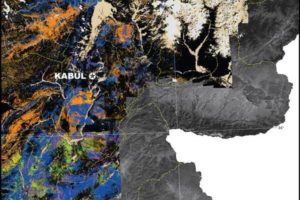u s geological survey
Scientists find increase in microearthquakes after Chilean quake
By studying seismographs from the earthquake that hit Chile last February, earth scientists at the Georgia Institute of Technology have found a statistically significant increase of microearthquakes in central California in the first few hours after…
Magma power for geothermal energy?
When a team of scientists drilling near an Icelandic volcano hit magma in 2009, they had to abandon their planned experiments on geothermal energy. But the mishap could point the way to an alternative source of geothermal power.
“Because we drille…
Optical water quality assessment
Madison, WI December 14, 2010 — Scientists at the U.S. Geological Survey (USGS) have proven that measuring fluorescence could improve source water monitoring during a study of the McKenzie River in Oregon. The study was designed to assess the …
Water well tests show more towns with elevated arsenic in Maine
The report “Assessment of Arsenic Concentrations in Domestic Well Water, by Town, in Maine, 2005-09” and maps are posted online.
Potentially harmful arsenic levels have been found in private water wells in towns across Maine where elevated arseni…
Northern wildfires threaten runaway climate change, study reveals
Climate change is causing wildfires to burn more fiercely, pumping more greenhouse gases into the atmosphere than previously thought, according to a new study to be published in Nature Geosciences this week.
This is the first study to reveal t…
Strange discovery: Bacteria built with arsenic
Menlo Park, Calif. — In a study that could rewrite biology textbooks, scientists have found the first known living organism that incorporates arsenic into the working parts of its cells. What’s more, the arsenic replaces phosphorus, an elem…
Root of the matter: A new map shows life-saving forests’ scarcity defies past estimates
Countless people clung to life in the branches of trees hemming the shorelines during the deadly 2004 tsunami that killed more than 230,000 coastal residents in Indonesia, India, Thailand and Sri Lanka. In the aftermath of the disaster, land change …
Potomac River: 10-fold increase in native submerged vegetation reflects improved water quality
The Potomac River in Washington, D.C. is showing multiple benefits from restoration efforts, newly published research suggests. Reduced nutrients and improved water clarity have increased the abundance and diversity of submerged aquatic vegetatio…
Many urban streams harmful to aquatic life following winter pavement deicing
This USGS report is published in the journal Environmental Science and Technology and is available as a free download online at http://pubs.acs.org/doi/abs/10.1021/es101333u.
The use of salt to deice pavement can leave urban streams toxic to aquat…
Climate change implicated in decline of horseshoe crabs
LEETOWN, W. Va. — A distinct decline in horseshoe crab numbers has occurred that parallels climate change associated with the end of the last Ice Age, according to a study that used genomics to assess historical trends in population sizes.
…
Rupture of Denali fault responsible for 7.9-mag Alaskan earthquake
Geologists just back from a reconnaissance of the 7.9-magnitude Alaska earthquake of November 3 confirm that rupture of the Denali fault was the principal cause of the quake. According to Caltech geology professor Kerry Sieh, Central Washington University geological sciences professor Charles Rubin, and Peter Haeussler of the U.S. Geological Survey, investigations over a week-long period revealed three large ruptures with a total length of about 320 kilometers. The principal rupture was a 210-kilometer-long section of the Denali fault, with horizontal shifts of up to nearly 9 meters (26 feet). This places the rupture in the same class as those that produced the San Andreas fault’s two historical great earthquakes in 1906 and 1857. These three ruptures are the largest such events in the Western Hemisphere in at least the past 150 years.

